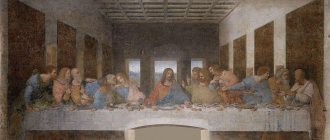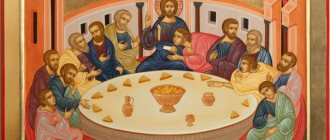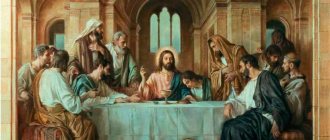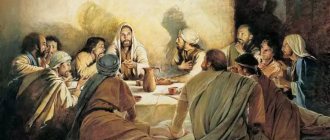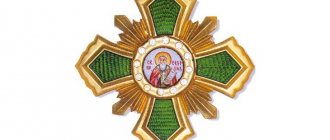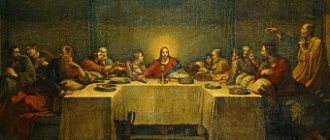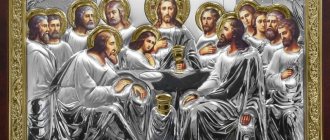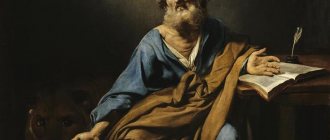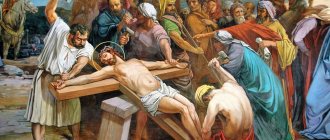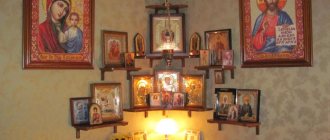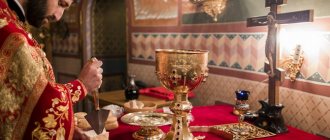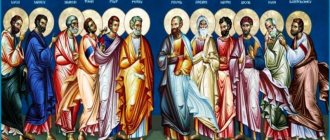Last Supper (1495-1498). Without exaggeration, the most famous wall painting. Although it is difficult to see her live.
It is not located in the museum. And in the same refectory of the monastery in Milan, where it was once created by the great Leonardo. You will only be allowed in with tickets. Which need to be purchased 2 months in advance.
I haven’t seen the fresco yet. But standing in front of her, questions would swirl in my head.
Why did Leonardo need to create the illusion of volumetric space? How did he create such diverse characters? Next to Christ is John or is it Mary Magdalene? And if Mary Magdalene is depicted, then who among the apostles is John?
Illusion of presence
Leonardo da Vinci.
Last Supper. 1495-1498 Monastery of Santa Maria delle Grazia, Milan, Italy. Wga.hu Leonardo intended to harmoniously fit his work into the surrounding environment. He built a perfect perspective. Real space smoothly transitions into depicted space.
The shadows of the plates and bread indicate that the Last Supper is illuminated from the left. There are just windows on the left in the room. The dishes and tablecloths were also painted the same as in the refectory itself.
Leonardo da Vinci. Last Supper. Fragment. 1495-1498 Monastery of Santa Maria delle Grazia, Milan, Italy
Another interesting point. To enhance the illusion, Leonardo demanded that the door be walled up. On the wall where the fresco was supposed to appear.
The refectory was very popular in the city among the townspeople. Food was carried from the kitchen through this door. Therefore, the abbot of the monastery insisted on leaving her.
Leonardo got angry. Threatening that if he does not meet him, he will write him as Judas... The door was walled up.
They began to carry food from the kitchen along long galleries. She was cooling down. The refectory no longer brought in the same income. This is how Leonardo created the fresco. But he closed the profitable restaurant.
But the result amazed everyone. The first spectators were stunned. The illusion was created that you were sitting in the refectory. And next to you, at the next table, is the Last Supper. Something tells me that this kept the diners from gluttony.
After some time the door was returned. In 1566, the refectory was again connected to the kitchen. Christ's feet were “cut off” by the new doorway. The illusion was not as important as the hot food.
How to get to the Last Supper and buy a ticket
The Last Supper fresco is located in the church premises, located at Piazza di Santa Maria delle Grazie, 2, 20123 Milano MI, Italy. You can take the metro to Cadorna station.
Tickets must be booked in advance; they sell out completely several months before the required date.
You can make your reservation yourself on the official website. Ticket price is 6.5 euros. For advance booking the price will increase by 1.5 euros. The exhibition hall is open daily, except Mondays, from 8:15 to 18:45. You can stay in the room for no more than a quarter of an hour.
Great job
When a work is ingenious, it seems that its creator had no difficulty in creating it. After all, that’s why he’s a genius! To release masterpieces one after another.
In fact, genius is in simplicity. Which is created by hard mental work. Leonardo stood for a long time in front of his work, thinking. Trying to find the best solution.
This irritated the already mentioned abbot of the monastery. He complained to the customer of the fresco. Ludovico Sforza. But he was on the master’s side. He understood that creating masterpieces is not the same as weeding a garden.
Long thoughts were not compatible with the fresco technique (painting on wet plaster). After all, it involves fast work. Until the plaster has dried. After which you can no longer make changes.
So Leonardo decided to take a risk. Applying oil paints to a dry wall. So he had the opportunity to work as much as he wanted. And make changes to what has already been written.
Leonardo da Vinci. Last Supper. Fragment. 1495-1498 Monastery of Santa Maria delle Grazia. Wga.hu
But the experiment was unsuccessful. After a couple of decades, the paint began to fall off due to dampness. For 500 years, the masterpiece was on the verge of complete destruction. And there is still little chance that our descendants will see it.
Search for prototypes and inspiration
Taking daily walks in different quarters of the city, among merchants, the poor and even criminals, the artist peered into the faces, trying to find features that could be endowed with his characters. He could be found in a variety of taverns, sitting in the company of the poor and telling them his entertaining stories. He was interested in human emotions. As soon as he caught an interesting facial expression, he immediately sketched it. History has managed to preserve some of the artist’s preparatory sketches for posterity.
Leonardo looked for inspiration and images for his future masterpiece not only among the faces on the streets of Milan, but also among his surroundings. His “employer” Sforza, who appeared in “The Last Supper” in the guise of Judas, was no exception. The legend says that the reason for this decision was the banal jealousy of the artist, who was secretly in love with the duke's favorite. Only a brave artist could make such a choice. “The Last Supper” has not only secret prototype codes, but also a unique lighting solution.
The picturesque light falling from the painted windows becomes truly realistic when combined with the natural illumination of the fresco from a window located on the adjacent wall. But today this effect cannot be observed, since the window on the wall is completely darkened in order to preserve the masterpiece.
Psychological reaction
Such a variety of character reactions was not easy for the master. Leonardo understood that people with different characters react very differently to the same words.
He told funny stories or unusual facts to those gathered at the same table in taverns. And watched how they reacted. To then endow them with the gestures of their heroes.
And so we see how the 12 apostles reacted. To the unexpected words of Christ, “One of you will betray me.”
Leonardo da Vinci. Last Supper. Fragment. 1495-1498 Monastery of Santa Maria delle Grazia, Milan, Italy
Bartholomew rose from the bench and leaned on the table. This impulse shows his readiness to act. As soon as he hears who the traitor is.
Andrey has a completely different reaction. In slight fright, he raised his hands to his chest with his palms facing the viewer. Like, this is definitely not for me, I’m clean.
Here is another group of apostles. Already on the left hand of Christ.
Leonardo da Vinci. Last Supper. Fragment. 1495-1498 Monastery of Santa Maria delle Grazia, Milan, Italy
Jacob Zebedee was stunned by what he heard more than anyone else. He looked down, trying to comprehend what he had heard. Opening his arms, he holds back the approaching Thomas and Philip. Like, wait, let the Teacher continue.
Thomas points to the sky. God won't allow this to happen. Philip rushed to assure the Teacher that he could trust him. After all, he is not capable of this.
The reactions are very different. No one had ever depicted this before Leonardo.
You won’t see this even among Leonardo’s contemporaries. Like, for example, Ghirlandaio. The apostles react and talk. But somehow it’s too calm. Monotonous.
Domenico Ghirlandaio. Last Supper. 1486 Fresco in the Basilica di San Marco, Florence, Italy. Wikimedia.commons.org
History of writing the image
The event depicted on the icon is described in the Gospels of Luke, Matthew, and Mark. The action takes place in Jerusalem during the celebration of Passover (the date of the return of the Jews from Egyptian slavery). Jesus gathered his closest disciples (12 apostles) for dinner (evening) to celebrate this holiday and say goodbye to them.
The high priests found an apostle who agreed to hand over the Teacher. Jesus knew that Judas would betray him and told his disciples about it. His future was predetermined by God the Father.
Before the meal, Jesus washed the disciples' feet. During the supper, Christ distributed bread and wine to the apostles and explained that these were symbols of His flesh and blood. Whoever tastes the bread and wine will become spiritually one with it. With this rite, the Savior established the New Testament - the Eucharist (thanksgiving), the sacrament of Communion.
Judas took communion, like the rest of the apostles, and left the supper. In the Garden of Gethsemane that same night, he handed Jesus over to the guards of the high priests. Then there were humiliations, the way of the cross, crucifixion, suffering, death and resurrection of Christ.
After the Last Supper and the Savior’s atoning sacrifice, the apostles filled Easter with a different content. Now it is a holiday of the Resurrection of Christ, victory over death. The Orthodox Church commemorates the events of this day on Maundy (Maundy) Thursday and at daily liturgies in the prayer of John Chrysostom.
The main mystery of the fresco. John or Mary Magdalene?
According to the official version, the Apostle John is depicted at the right hand of Christ. But he is depicted as so feminine that it is easy to believe in the legend about Mary Magdalene.
Leonardo da Vinci. Last Supper. Fragment. 1495-1498 Monastery of Santa Maria delle Grazia, Milan, Italy
And the oval of the face is purely feminine with a pointed chin. And the brow ridges are too smooth. Also long thin hair.
And even his reaction is purely feminine. What he/she heard made him/her feel uncomfortable. Helplessly, he/she clung to the Apostle Peter.
And his/her hands are folded limply. But before John was called by Christ, he was a fisherman. That is, those who pulled a multi-kilogram net from the water.
Where is John?
John can be identified in three ways. He was younger than Christ. As we know, before his calling he was a fisherman. He also has a brother, also an apostle. So we are looking for someone young, strong and similar to another character. Here are two contenders.
Last Supper. Left: Bartholomew. Right: Matthew.
Although everything can be much more prosaic. The two characters resemble each other because the same person posed for the artist.
And John looks like a woman because Leonardo was inclined to depict androgynous people. Just remember the pretty angel from the painting “Madonna of the Rocks” or the effeminate “John the Baptist”.
Paintings by Leonardo da Vinci. Left: “Madonna of the Rocks” (fragment). 1483-1486 Louvre. Right: “John the Baptist.” 1516-1518 Louvre.
Choose for yourself what you like best. Believe in the legend of Mary Magdalene or adhere to the official version of art historians. This will not diminish the significance of the Last Supper.
After all, this is the only creation of Leonardo that has been available to people throughout the centuries. All other paintings were kept in private collections until the 19th century. And only their owners saw them.
Read about other masterpieces of the master in the articles:
“Mona Lisa. The mystery of Mona Lisa, which is little talked about”
“Madonna Litta. Unusual details of a masterpiece”
***
If my style of presentation is close to you and you are interested in learning painting, I can send you a free series of lessons by email. To do this, fill out a simple form using this link.
Comments
for other readers,
see below
. They are often a good addition to an article. You can also share your opinion about the painting and the artist, and also ask the author a question.
Author: Oksana Kopenkina
Go to home page
